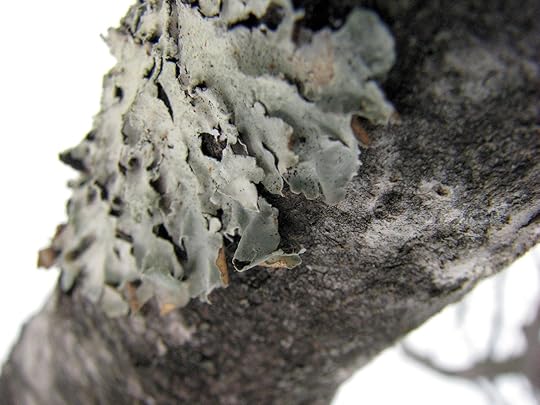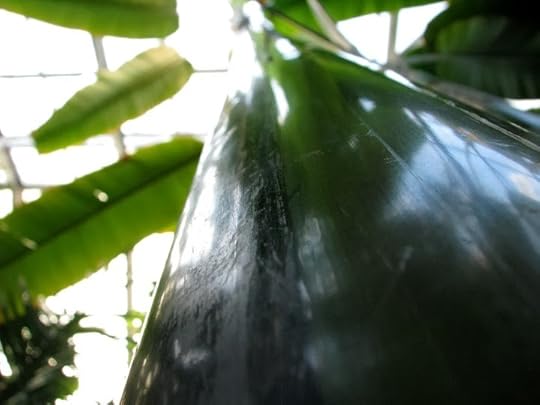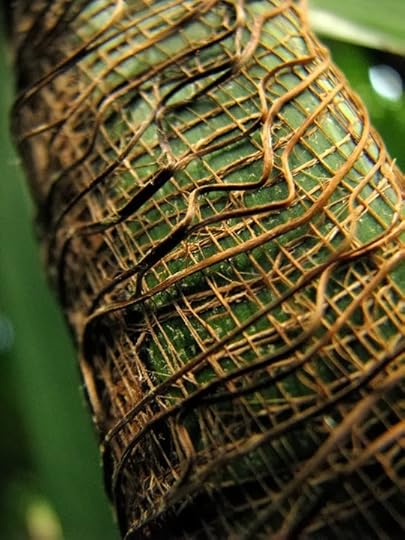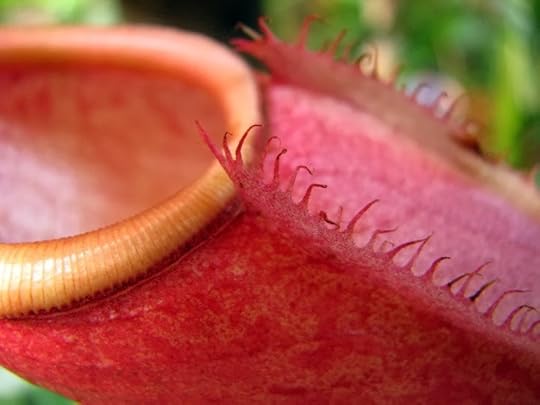Ariel Gordon's Blog, page 39
March 27, 2014
melt
Published on March 27, 2014 21:34
traces
 All photos Assiniboine Forest, Winnipeg, MB. March 9, 2014.* * *
All photos Assiniboine Forest, Winnipeg, MB. March 9, 2014.* * *The forest was full of snowplow mountains. And we climbed them, myself and Cynthia and our two girls. And it was cold and the snowbanks were still thigh deep.
But I found these things and we got in a good walk on top of that. But then I clean forgot to post them...
I'm looking forward to the rest of the snow melting. I'm looking forward to something other than white and grey, these faint traces of colour.
Published on March 27, 2014 21:25
March 18, 2014
Small Books Big Country: Venue #42

* * *
I always thought I was somewhat foolish for putting together multi-city tours for my chapbooks. But Kevin Spenst WINS!
Published on March 18, 2014 20:26
March 10, 2014
Clumped
Published on March 10, 2014 22:15
Warm fuzzy
Published on March 10, 2014 22:10
Climbing


* * *
There were climbing vines clothing the walls of the Palm Room. And where there weren't vines, there were marks where there had been vines...
Published on March 10, 2014 22:07
Pitcher
Published on March 10, 2014 22:02
Green fruit

* * *
These are papayas. They were growing over one of the gardener's entrances to the Palm Room. Elsewhere, there were small bunches of bananas.
I wondered, looking up, my glasses ever-so-slightly fogged, if the gardeners pick the fruit. And, if so, what do they do with it - do they share it or do they take turns taking home a single ripe fruit?
Published on March 10, 2014 22:01
Other forests
 All photos Assiniboine Forest, Winnipeg, MB. March 10, 2014.
All photos Assiniboine Forest, Winnipeg, MB. March 10, 2014.* * *
So a week ago, when the cold was unrelenting, I remembered the Conservatory.
To be clear, I remembered the hundred-year-old Palm Room at Assiniboine Park. The rest of the Conservatory was (re)built around the Palm Room in 1968.
It's a small room. One loop that has always included a small fishpond half-full of coins (next to a sign that says "Please don't throw coins in the fishpond.").
One green and humid loop that is full of sun, even towards the end of a miserable February.
While I'm committed to (obsessive about?) my own forest, I'm happy to mushroom anywhere.
Also, given that I'm working on non-fiction essays on urban forests, I've been trying to look at other forests (or forest-like spaces) analytically.
So: many reasons, physiological and otherwise, to spent a few hours in the Conservatory, endlessly walking that loop.
We visited on the Saturday first, stopping in for a little less than an hour before rushing off to (indoor) skating across the city. But the girl and I went back the next day, with an activity bag for the girl and a camera for me.
And I sat and looked. And waited for my camera to acclimatize. And watched people enter the Palm Room, take a deep breath, and struggle out of their coats.
After a few minutes, I started taking pictures. Of the trees, of the vines, of the groundcover. And I got sweaty doing it, which was strange and also kind of wonderful.
But I was looking at everything, absorbing everything, with the knowledge that the Palm Room only has a few more years, because the glassy dome that protects it - and the greenhouses that supply it with plants - is on the verge of failing.
There have been plans to rebuild the Conservatory for years, but, recently, it was announced that virtually none of specimens from the Palm Room will be transplanted to the new space. The big trees can't be transplanted and it doesn't make sense, financially, to go to the bother of transplanting the smaller ones.
So the few trees that were planted when the Palm Room was first built in 1914 will likely be cut down.
Having read the news articles, I stood there for a long time, trying to decide how I felt about this decision. Is it reasonable to expect horticulturalists to try to transplant trees whose root systems have the same footprint as the building itself? No. Is the then-inevitable death of the old trees (and, also, the young trees) still something to mourn? Yes. And yes.
I also realized, standing there, that the that mass of greenery that is the Palm Room isn't a forest. It's closer to a small garden, but even then, it doesn't have any of the snails and butterflies and spiders and bees and slugs and mosquitoes that a garden would have here in Zone 3.
Neither does it have any of the birds or small animals that would live in and around a garden or the larger animals that might live amidst the trees, even in an urban setting.
And there were no mushrooms. Not in the soil. Not on the trunks of the trees I could access from the path. Not anywhere.
So. While the Palm Room felt vitally alive, while it felt necessary, like a garden or an arboretum, it's a construction. And a fragile one at that: Park officials are worried, for instance, that the building won't make it until the new Conservatory is finished, four or five years from now.
I'm going to pledge to spend the next four or five winters visiting the Palm Room, absorbing more of its bright green light. And to say goodbye to the hundred years of gardeners' fingers in the soil and on the plants that create its impossible humidity.
Published on March 10, 2014 21:54
February 28, 2014
(Extremely organized) school visit
 * * *
* * *My thanks to student Wencke Rudi for her work on the poster...and the Seven Oaks Met School for the invite!
Published on February 28, 2014 09:58








